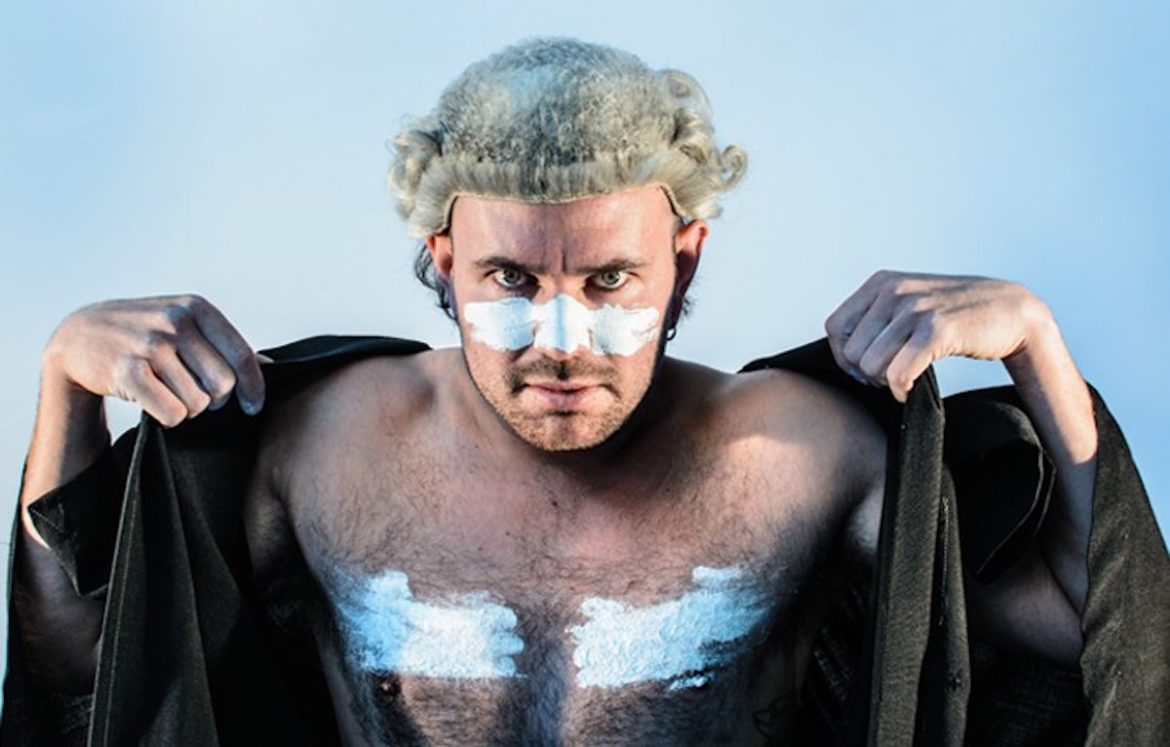Confronting the reality of Black deaths in custody, Big House Dreaming is a powerful work that invites us to question what is wrong with our justice systems, says Monique Grbec
In a month when three First Nations brothers died in custody, the conviction of the United States police officer who murdered George Floyd, sparking worldwide rallies calling for an end to institutionalised racism, offered hope for social reform. On May 6 – 30 years after the release of the Aboriginal Deaths in Custody Royal Commission report – at least 474 Aboriginal Australians have died in custody. There has never been a conviction. Not one. Not even for Lloyd Boney whose questionable death in 1987 led to the royal commission.
Declan Furber Gillick’s Bighouse Dreaming at Fairfax Studio, Arts Centre Melbourne, is an Arrente story that gives an up-close and personal insight into this country’s social, economic and racial shame: children in detention, incarceration for petty crimes, and deaths in custody.
Red desert sand circles the stage to tell us that this is a Red Centre story. Inside the back edge of the circle is a large white conference table on heavy chrome legs and wheels. Chris Wallace aka C-War, performed by Furber Gillick, stands front and centre stage. He’s a fast-talking 16-year-old who wants more from life than school, foster care and “this shithouse town”. While he looks forward to the invitation to do men’s business with his brah Leeboy (also Fuber Gillick), he works on laying lyrics for his dream life of being a gansta rapper like his American hero namesake, Chris Wallace aka Biggie Smalls.
It’s one of several pieces of brilliant choreography, directed by Mark Wilson, that work to visually and audibly reinforce the power of systems and structure.
Wallace is caught graffitiing but misses his court hearing. Even though the graffitiing is a first offence, within hours there’s a warrant for his arrest. Lawyer with a conscience Anaud (Dushan Philips) finds Wallace and gets him to court where he stands before Godbold (Ross Daniels), the officious judge who addresses Wallace as “Master Wallace” and continually asserts that he’s “not a child”. Wallace mirrors the judge’s detachment, a barely concealed disinterest. We learn that Wallace was the youngest offender in a group. We learn that because Wallace doesn’t have a guardian to go home to, he is sentenced to remand.
Paul (also Daniels), with his fair skin, thin lips and mean eyes, stands tall for a short man. Dressed in a prison guard’s uniform, his swagger of authority creates a striking resonance with George Floyd‘s murderer. Crossing to the front of the stage he barks into his mobile phone: no, regardless of what she says, he did not sexually assault his friend’s partner; and if anyone dares to challenge him further he will do everything in his power to silence them.
Paul alternates between a one-sided banter about football players with a fellow guard (Philips) and registering Wallace. Showing Wallace that he’s the boss and can do anything he wants, Paul rummages through Wallace’s personal belongings to find his watch. Dangling it, he admires the weight and quality. Then he drops it on the floor: “oops”.
The emotional challenges of remand are eased when Leeboy brings him a photocopied picture of the newly graffitied police station: free C-War. Wallace is thrilled and hides the precious paper in his undies. But soon, Paul appears and questions what he’s hiding, and he’s pleading to keep the paper.
Paul responds calmly but forcefully, as if trying to calm a wild beast. Words, words words, a gaslight rant of power and coercion. He follows through by pushing a table into Wallace, who hits the wall and falls to the floor. Paul maintains a steady stream of ranting as he pushes table after table into the space where Wallace has disappeared.
It’s one of several pieces of brilliant choreography, directed by Mark Wilson, that work to visually and audibly reinforce the power of systems and structure. The sound and movement of the tables slamming as they nest into one another against Paul’s well-paced diatribe creates the sense that this is a steam train cranking, a train racing full steam ahead. A train that will never stop.
“I can’t breathe” Wallace says. Without slowing down, Paul continues slamming the tables into one another and ranting about what Wallace needs to say for him to stop. Then he does slow, and angling his ear toward the pile of tables, he turns on his heel to leave: “call a medic!”
“Two suicides in one week.” Anaud is devastated, worn out. He will move to Perth to pursue a new career. At the Criminal Supreme Court hearing, Paul recounts the event: “I don’t recall … no, I don’t recall … I don’t recall.”
Where is the accountability? How can a murder be judged as suicide? The legal team of George Floyd’s killer argued that George Floyd died because he used drugs and had pre-existing medical conditions causing his heart to fail – not because a knee was pressed into his chest for nearly nine minutes.
Big House Dreaming invites us to question what is going wrong with our systems of care and justice, and asks what we as individuals can do to nudge social reform? We can learn the names and situations of three Aboriginals who have died in custody. We can know their story, and until justice reaches our courts, we can follow the fight of Janelle Monae F., and “say their names”.
Big House Dreaming by Declan Furber Gillick. Directed by Mark Wilson. Set and costume design by Bethany J Fellows. Lighting by Kris Chainey. Sound design by Mark Coles Smith. Performed by Declan Furber Gillick, Ross Daniels, Dushan Philips. Producer Susannah Day. Developed by Deadly Fringe (ILBIJERRI and Melbourne Fringe). Presented by Arts Centre Melbourne Recovery Fund at Fairfax Studio, Arts Centre Melbourne, as part of the Yirramboi Festival.

